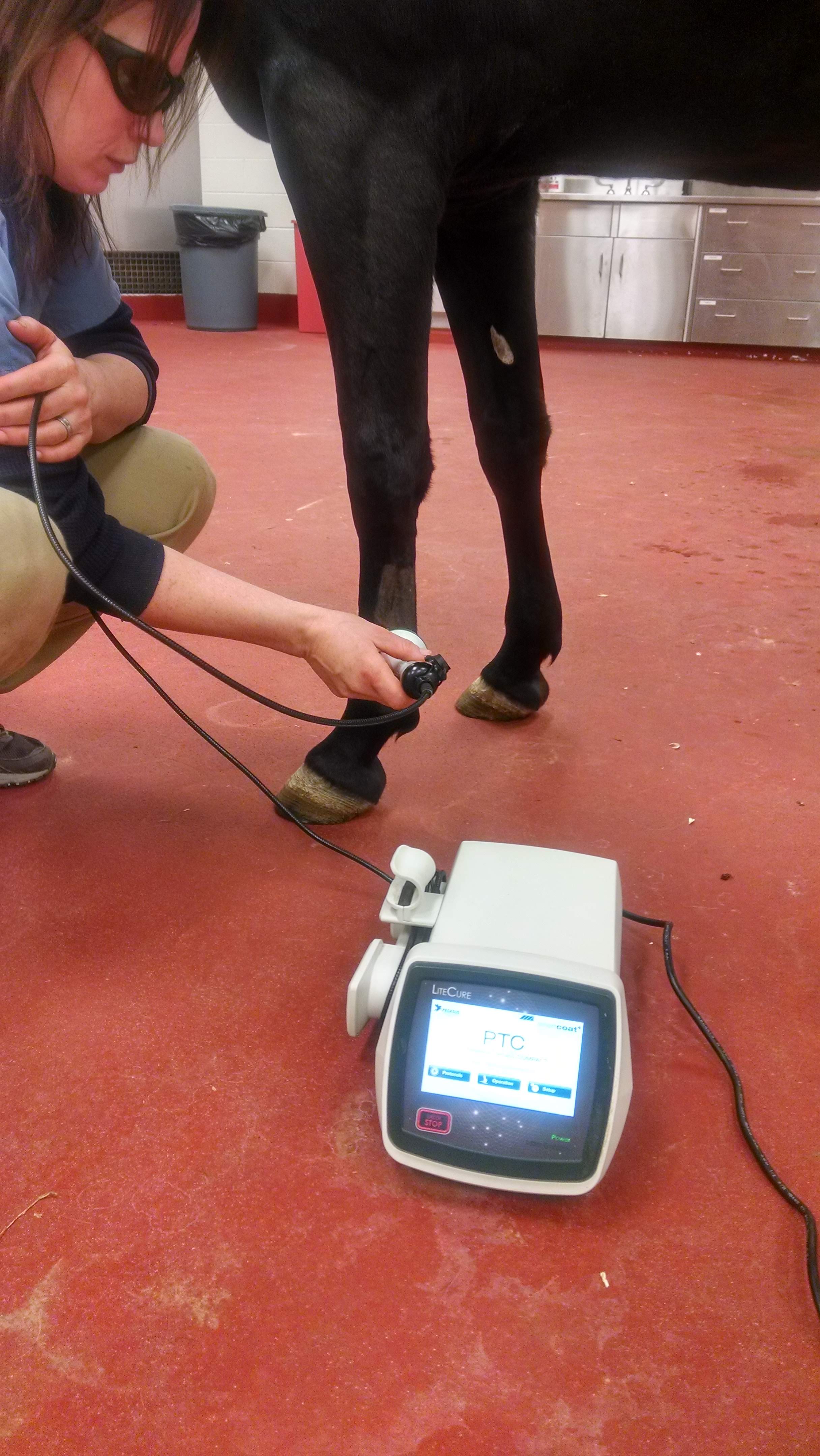The Power of Equine Therapy for Anxiety, PTSD, and Emotional Healing
The Power of Equine Therapy for Anxiety, PTSD, and Emotional Healing
Blog Article
Examining the Performance of Laser Therapy in Horse Therapy for Injury Rehab
The assessment of laser therapy's effectiveness in equine injury rehabilitation depends upon multiple variables, consisting of healing time, pain mitigation, and cells regeneration. Medical researches suggest noteworthy improvements in problems like tendonitis and osteoarthritis, connected to enhanced cellular function and elevated ATP manufacturing. Veterinarians regularly observe premium end results with laser treatment compared to standard methods, positioning it as an important aspect in equine care. The requirement for continual monitoring and personalized therapy plans can not be overstated. What details medical proof sustains these claims, and exactly how do veterinarians implement these procedures in method?
Understanding Laser Treatment
Laser therapy has become an essential tool in vet medication, specifically in the therapy of equine problems. Recognized for its non-invasive nature and efficiency, laser treatment involves the application of particular wavelengths of light to promote cells repair and minimize swelling. This healing technique is increasingly preferred for its capacity to accelerate the healing process in equines experiencing a variety of musculoskeletal injuries and persistent problems.
The key mechanism behind laser therapy is its capacity to boost cellular functions. Furthermore, laser treatment advertises vasodilation, improving blood flow and oxygen shipment to broken cells, thus speeding up healing.
In equine medication, laser treatment is particularly useful for problems such as tendonitis, osteo arthritis, and injury healing. The technique is lauded for its pain-relieving properties, allowing equines to gain back wheelchair and feature a lot more rapidly. Vets also value its very little side impacts compared to various other therapy modalities, making it a reliable and risk-free option for equine treatment.

How Laser Therapy Works

Upon absorption, these photons cause a collection of biochemical modifications, enhancing mitochondrial feature and causing enhanced adenosine triphosphate (ATP) production. This surge in ATP speeds up mobile metabolic rate, promoting cells repair service and regeneration. Additionally, laser treatment modulates inflammatory feedbacks by impacting cytokine levels and lowering oxidative tension, thereby alleviating discomfort and swelling.
Another substantial aspect of laser treatment is its function in boosting microcirculation. The therapy advertises vasodilation, enhancing blood circulation and oxygen delivery to broken tissues (Equine Therapy). This assists in the removal of mobile debris and supports the spreading of fibroblasts and collagen synthesis, important for wound healing
Professional Evidence
The efficiency of laser therapy in equine therapy has actually been validated via various scientific researches, showcasing its restorative possible across a variety of problems. Several regulated tests and observational research studies have actually documented considerable renovations in tissue repair work, discomfort decrease, and overall rehab timelines. For example, a study carried out by Turner et al. (2012) showed that steeds treated with low-level laser treatment (LLLT) for tendon injuries displayed sped up recovery compared to those getting traditional therapies. The research study highlighted a marked decrease in swelling and improved collagen development.
Similarly, study by Johnson and associates (2015) focused on equine muscular tissue injuries, exposing that laser therapy substantially quickened muscular tissue fiber regrowth and reduced muscle mass rigidity. Professional look at these guys assessments have actually revealed that laser treatment can minimize chronic conditions such as osteo arthritis.
Vet Insights

Veterinarians additionally value the adaptability of laser therapy. She points out that laser treatment can be customized to the particular needs of each horse, making certain ideal results.
Moreover, vets value the capability to integrate laser treatment with various other treatment modalities. This multimodal strategy Find Out More can improve overall therapy effectiveness, offering a comprehensive remedy for equine rehab. Such endorsements from experienced professionals emphasize the expanding acceptance and application of laser treatment in equine medicine.
Practical Factors To Consider
An essential facet of carrying out laser therapy in equine therapy involves recognizing the functional considerations that guarantee its efficacy and safety and security. Primarily, it is crucial to choose the suitable laser tool, as various kinds differ in wavelength, power, and infiltration deepness. Equine Therapy. Veterinarians have to be well-versed in these specifications to customize treatment methods effectively to every injury kind
Furthermore, the regularity and period of laser therapy sessions need mindful planning to optimize therapeutic benefits while lessening any kind of potential negative results. Consistent surveillance of the horse's reaction to therapy can lead necessary modifications in the treatment regimen. Establishing a secure and regulated environment during treatments is likewise necessary look at this web-site to prevent unintentional exposure to laser discharges, which can damage both the steed and the trainer.
Training and certification of personnel providing laser therapy are vital to make certain correct technique and to copyright safety standards. Additionally, maintaining accurate records of each session, including laser settings and observed outcomes, is vital for evaluating the overall effectiveness of the therapy and for making data-driven choices.
Verdict
Laser treatment has actually emerged as an effective modality in equine injury rehabilitation, providing substantial benefits in recuperation time, discomfort relief, and cells healing. Professional researches emphasize substantial renovations in conditions such as tendonitis and osteo arthritis, credited to boosted mobile function and enhanced ATP production. Vet monitorings prove these findings, highlighting remarkable end results contrasted to conventional therapies. For optimum results, continuous surveillance and personalized treatment methods stay vital in leveraging the full possibility of laser therapy in equine treatment.
Report this page